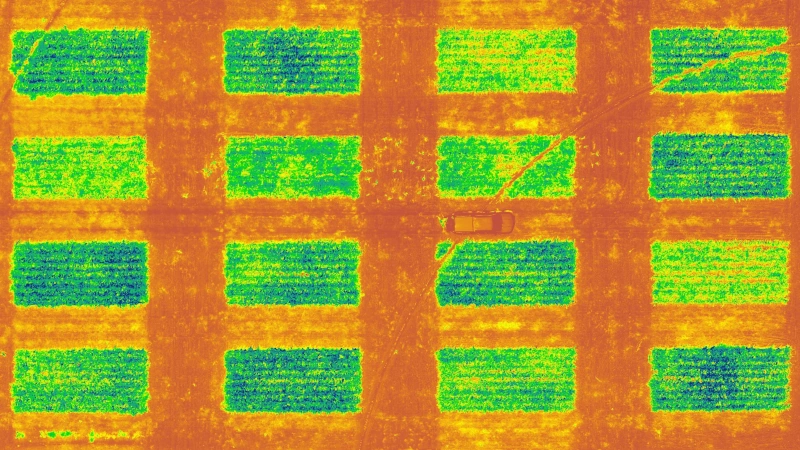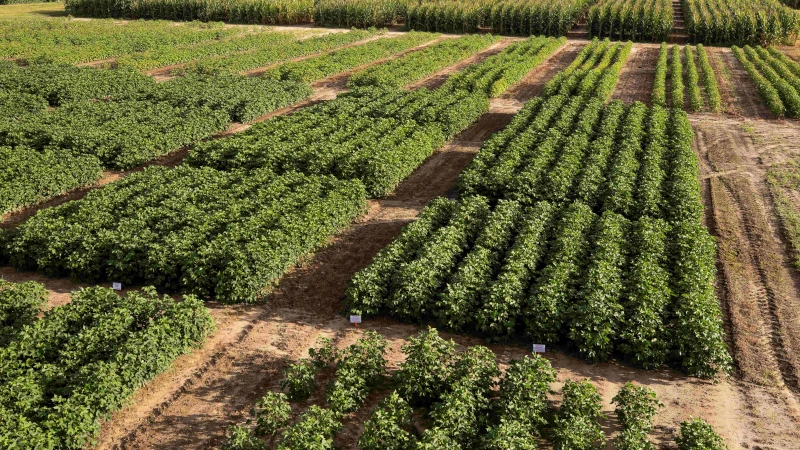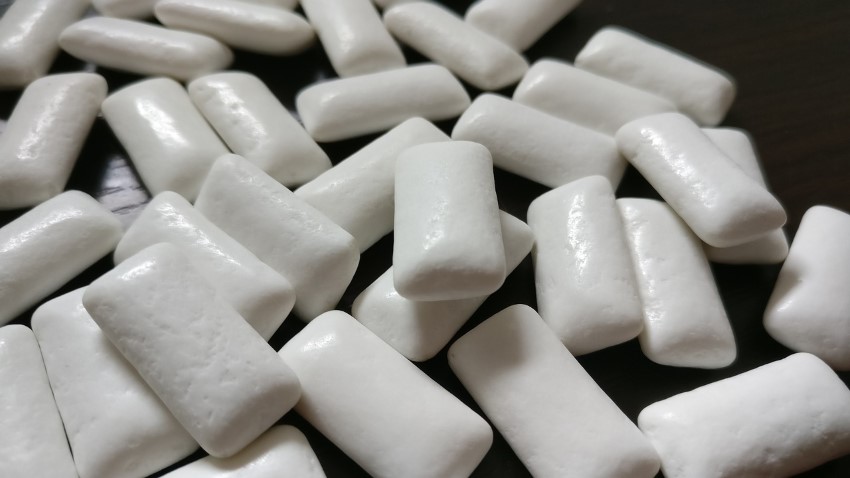The ability to detect crop nutrient deficiencies and promptly modify fertilizer application to address them is invaluable to agricultural producers — especially growers operating under slim profit margins. Identifying how much of a particular nutrient to add, however, is a balancing act. A UF/IFAS research project underway endeavors to remove the guesswork by providing growers with site-specific data.
Feature Image: Cotton and corn plants. Credit: Cat Wofford, UF/IFAS
UF/IFAS Best Management Practices Lab coordinator Lakesh Sharma leads a team of researchers using drones to develop algorithms that estimate nutrient application rates for optimal crop yields. They are within months of finalizing results related to the nitrogen needs of corn and cotton.

Lakesh Sharma, Assistant Professor, Soil Fertility and Sustainable Agriculture. Credit: UF/IFAS
“In the near future, growers will be able to use sensors to detect how much nitrogen is present in plant leaves and, based on our algorithms, calculate how much additional nitrogen is needed by their crops,” said Sharma, assistant professor of soil fertility and sustainable agriculture.
Establishing optimum rates for nitrogen is important because nitrogen is a mobile nutrient easily displaced by water, soil, gases and other factors.
It’s also a costly commodity.
“If farmers apply too much, it cuts into their profit margins,” Sharma said. “But they’re also mindful that if they apply less than what is needed, they could go out of business due to yield losses.”
Sharma’s study is one facet of the UF/IFAS Nutrient Management Program, a suite of state-funded research projects updating decades-old nutrient application recommendations for Florida crops. The new rates are meant to deliver crop yields of the highest quality and quantity while minimizing adverse environmental effects.
Sharma is developing his algorithms using the Normalized Difference Vegetation Index (NDVI), an established predictor of plant health. NDVI values are a ratio of the red wavelengths and near-infrared wavelengths reflected by plant leaves. Values range from -1 to 1, with low, negative values indicating water or clouds, 0 indicating bare soil and high, positive values indicating lush vegetation.

Normalized Difference Vegetation Index (NDVI) map for a corn field at the North Florida Research and Education Unit – Suwannee Valley in Live Oak. Blue represents values closer to 1, or lush vegetation. Brown represents values closer to 0, or bare soil. Credit: Ayush Sharma, UF/IFAS
Using a multispectral sensor mounted to a hexacopter drone, Sharma’s team collected NDVI data from small plot trials at three UF/IFAS properties: the North Florida Research and Education Unit – Suwannee Valley in Live Oak; the Plant Science Research and Education Unit in Citra; and the Hastings Agricultural Extension Center in Hastings. The results are aerial maps with swaths of colors corresponding to NDVI values. The team’s algorithms connect a nutrient application rate with each NDVI value.
By allowing the algorithms to direct nitrogen application amounts and by applying fertilizer throughout the growth cycle, Sharma’s team has achieved a nitrogen efficiency rate above 60% — about 15% higher than the national average and 20% higher than the global average.
Although the research continues, Sharma is already working through UF/IFAS Extension offices to share what he’s learned about precision agriculture tools like drones, NDVI sensors and NDVI-derived algorithms with growers. Through demonstrations, growers are learning how to replicate his results. He imagines a future in which they can rely on data gleaned from a sensor in the sky to direct GPS-mounted tractors applying precise amounts of fertilizer through variable-rate nozzles.
“We are making growers aware of this technology and exposing them to it as much as possible, so they can understand how it works and how they can benefit from it,” Sharma said.
The post UF/IFAS researchers deploy drones to perfect nutrient rates first appeared in the University of Florida Institute of Food and Agricultural Sciences News Blog.
Written by: Megan Winslow, Public Relations Specialist, UF/IFAS
Megan grew up in Gainesville and graduated from the University of Florida College of Journalism and Communications. She enjoys photography, swing dancing and classic rock music. She is a huge fan of Tom Petty.
The mission of the University of Florida Institute of Food and Agricultural Sciences (UF/IFAS) is to develop knowledge relevant to agricultural, human and natural resources and to make that knowledge available to sustain and enhance the quality of human life. With more than a dozen research facilities, 67 county Extension offices, and award-winning students and faculty in the UF College of Agricultural and Life Sciences, UF/IFAS brings science-based solutions to the state’s agricultural and natural resources industries, and all Florida residents.



